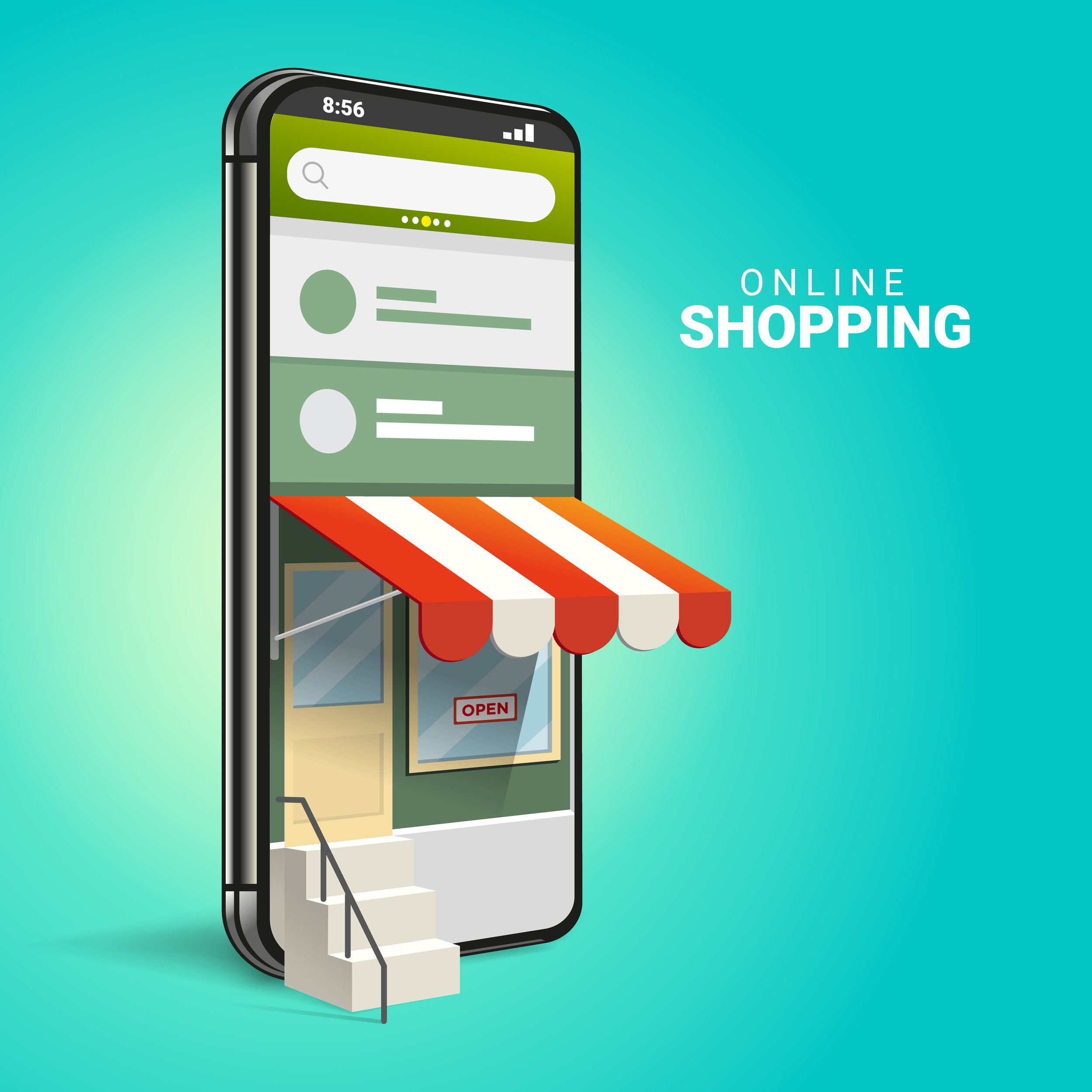Tips for online sellers
Here are some time-saving tips for online sellers!
1. Utilize Fulfillment Services: Consider outsourcing order fulfillment to third-party logistics (3PL) providers. These services handle storage, packing, and shipping of orders, saving you valuable time and resources. Thor & Company will help you find the right logistics solutions to your needs.
2. Implement a Content Calendar: Plan your content marketing in advance by creating a content calendar. Schedule social media posts, blog articles, email newsletters, and promotions ahead of time. Planning your content will help you maintain consistency and you’ll be able to plan large pushes all at once.
3. Use Social Media Management Tools: Simplify social media management by using tools like Hootsuite, Buffer, or Sprout Social. These platforms allow you to schedule posts across multiple social media channels in advance, saving time and ensuring a consistent online presence.
4. Optimize Checkout Process: Streamline the checkout process on your e-commerce website to reduce cart abandonment and save time for customers. Implement features like guest checkout, one-click purchasing, and saved payment information to make the buying process quick and convenient. The fewer clicks it takes for your customers to buy the more likely they are to buy.
5. Implement Customer Relationship Management (CRM) Software: Invest in CRM software to manage customer interactions, track sales leads, and automate follow-up communications. A CRM system streamlines the sales process and helps you build lasting relationships with customers, ultimately saving time on manual tasks.
6. Monitor Competitors: Keep an eye on your competitors' pricing strategies, product offerings, and marketing tactics using competitive analysis tools. Understanding the competitive landscape helps you adapt quickly, identify opportunities, and stay ahead in the market.
7. Offer Subscriptions or Bundles: Introduce subscription services or product bundles to encourage repeat purchases and simplify the ordering process for customers. Subscriptions provide predictable revenue streams, while bundles offer convenience and value, saving time on individual sales transactions.
8. Stay Updated with Technology: Stay abreast of the latest technological advancements and trends in e-commerce. Embrace new tools, software updates, and integrations that can streamline your operations and enhance the customer experience.
9. Continuously Improve Processes: Regularly review your business processes and workflows to identify areas for improvement. Solicit feedback from customers and employees to pinpoint pain points and inefficiencies, then implement changes to optimize your operations over time.
By incorporating these additional tips into your online selling strategy, you can further enhance efficiency, save time, and position your business for long-term success in the competitive e-commerce landscape.
How to Reduce Inventory Shrinkage in Your Supply Chain with These Proven Tips
Effective inventory management is crucial for the success of any small business. Inventory shrinkage, the loss of products between purchase from suppliers and sale to customers, can significantly impact profitability. Understanding and addressing the causes of inventory shrinkage can help you streamline your supply chain management and grow your business.
Understanding Inventory Shrinkage
Inventory shrinkage occurs due to several factors, including theft, administrative errors, damage, spoilage, vendor fraud, and vendor error.
Theft, both internal and external, is a major contributor, often arising from inadequate security measures. Administrative errors, such as inaccurate record-keeping or miscounts during inventory audits, also play a significant role. Damage and spoilage further compound the problem. Vendor fraud or errors, including overbilling or delivering substandard products often go unnoticed without diligent oversight.
Implementing Effective Inventory Management Systems
Robust inventory management systems are essential in combating inventory shrinkage. Utilizing inventory tracking software provides real-time visibility into stock levels, sales, and deliveries, allowing for more precise control over inventory. Regular audits and cycle counts are equally important; they help identify discrepancies early. Although costly, many larger companies implement barcode and RFID technology that enhances accuracy in tracking inventory movements, reducing the risk of manual errors and ensuring better control over stock.
Improving Supplier Relationships
Detailed contracts outlining expectations and regularly auditing vendor invoices and deliveries reduce problems. Common types of vendor fraud or vendor error include overbilling, delivering substandard items, wrong items, and short deliveries. Conducting thorough checks on your vendors, verifying their credentials, and checking references can help ensure their reliability. Building a relationship of trust and accountability with your vendors is key to mitigating the risks associated with vendor fraud.
Third-Party Logistics Provider (3PL)
Partnering with a third-party logistics provider (3PL) can significantly enhance your inventory management capabilities. A 3PL offers advanced logistics and inventory management technology, reducing shrinkage and improving efficiency. Establishing performance metrics and conducting regular reviews with your 3PL ensure transparency and efficiency, fostering a collaborative relationship that addresses any issues promptly and maintains high service standards. If you’re working with a professional service, they can communicate with the 3PL warehouses for you.
Leveraging Data and Analytics
Data and analytics provide valuable insights into your inventory management processes, enabling informed decision-making. Identifying patterns and trends in shrinkage allows you to create targeted prevention strategies for specific issues. Calculating your inventory turnover ratio reduces the risk of shrinkage due to obsolescence. Leveraging data-driven decision-making enhances overall efficiency, reduces costs, and improves profitability, ensuring your inventory management processes are both effective and sustainable.
Although it may be challenging to add to an already busy schedule, proactive measures in inventory management can significantly reduce shrinkage and enhance overall supply chain efficiency. By implementing the strategies outlined above, you can help safeguard your inventory, optimize operations, and boost profitability.
If you're looking to streamline your supply chain management and grow your business, contact us for a free quote today. We'd love to help you achieve your business goals with expert logistics and inventory management solutions.
Checklist for a Strong Supply Chain
In the fast-paced business environment we live in, your supply chain is the critical component that keeps your business competitive and efficient. Your supply chain encompasses the entire process of producing and delivering a product or service, from raw materials to the end customer. Having a strong, well-managed supply chain is essential for ensuring operational efficiency, customer satisfaction, and building a successful business.
Checklist for Supply Chain Management
Supply chain management (SCM) involves coordinating and optimizing all aspects of the supply chain. This includes sourcing, manufacturing, logistics, inventory management, and customer service. Effective SCM ensures that each component functions smoothly and seamlessly, resulting in lower costs, faster production cycles, and improved customer experiences. SCM is complex, and as a strategic building block, plays a pivotal role in a company's success.
How Strong is Your Supply Chain?
Your supply chain can make or break your business as a benefit or a liability. Use this benefits list as a standard to help you assess your supply chain’s overall health.
Efficiency and Cost Reduction
A robust supply chain streamlines operations, reduces waste, and cuts costs. By optimizing production schedules, transportation, and inventory levels, businesses can significantly lower their operational expenses. This efficiency not only enhances profitability but also allows companies to offer competitive pricing. Do you have a good relationship with your vendors, manufacturers and shippers? Are you tracking your rates?
Customer Satisfaction
On time delivery of products is crucial for maintaining customer satisfaction. A strong supply chain ensures that your products are available when and where your customers need them. This reliability enhances the overall customer experience, leading to increased loyalty and repeat business. Are your product delivery times appropriate for your products, or could they be improved?
Risk Management
Identifying and mitigating potential disruptions is a key function of a strong supply chain. Whether it's a natural disaster, political instability, or a sudden spike in demand, a resilient supply chain can adapt quickly to minimize impact. Your business’ flexibility and preparedness are essential for navigating uncertainties and maintaining business continuity. What are your contingency plans?
Competitive Advantage
A well-managed supply chain gives companies a significant edge. Faster time-to-market, efficient resources, and superior product quality all contribute to a stronger market position. The strength of your supply chain fosters innovation and supports the development of new products, helping your business stay ahead of the curve. Does your supply chain reliability allow you and your people to develop new products? Or are you continually distracted by supply chain issues?
Procurement Success: Challenges and Planning
Let’s face it. Procurement is convoluted and challenging. Economic fluctuations, supply chain disruptions, increasing costs, and regulatory changes are just a few. The added complexities of climate change and security threats further complicate the landscape. However, with strategic planning and innovative solutions, procurement success is within reach.
Current Market Challenges
Today’s dynamic, post-covid market presents several procurement challenges that require expert handling. You may have already experienced many of these, but if not, here are some ideas for future planning:
1. Economic Volatility: Fluctuating economic conditions demand agile and adaptable procurement strategies including the ability to survive a competitive market.
2. Supply Chain Disruptions: Natural disasters, complicated geopolitical situations, and pandemics highlight the fragility of global supply chains.
3. Rising Costs: Inflation and increased material costs call for efficient cost management.
4. Regulatory Changes: Staying compliant with evolving regulations is crucial to avoid penalties, fines and disruptions.
5. Technological Integration: Technology is constantly changing and requires up-to-date and effective use of new tools.
6. Climate Change: Extreme weather events and evolving environmental regulations impact supply availability and costs.
7. Security Threats: Cybersecurity and other security threats pose significant risks to procurement processes.
Strategic Planning and Analysis
To address and get ahead of these potential issues, strategic planning and analysis are essential:
Market Research: Do market research and keep an eye on the latest developments to understand trends, identify reliable suppliers, and anticipate potential disruptions.
Flexible Strategies: Develop flexible and adaptable procurement strategies that can be adjusted as conditions change. Consider alternative plans and sources to mitigate risks.
Scenario Planning: Envision and run through various potential scenarios to prepare for various potential futures, including climate-related and security risks.
Contact us today for a free quote.
How to Maximize the Effectiveness of Collaborator/Influencer Partnerships Part 2
To maximize the effectiveness of collaborator (aka influencer) partnerships, try taking a strategic approach:
Set Clear Objectives: Clearly define your goals and key performance indicators (KPIs) for the collaborator campaign. Whether your goal is to increase brand awareness, drive website traffic, or generate sales, having clear cut objectives will guide your partnership efforts and help you measure your success.
Identify Relevant Collaborators for Your Business: Conduct thorough research to identify collaborators whose values, content style, and audience demographics align with your brand. Don’t just look for the highest follower count. Prioritize engagement, authenticity, and relevance when selecting potential partners.
Establish Authentic Relationships: Approach collaborator partnerships as genuine collaborations rather than transactional exchanges. Build rapport with collaborator, understand their audience and preferences, and co-create content that resonates with both their followers and your brand identity.
Provide Creative Freedom: Empower collaborator to create authentic content that showcases your brand in a way that aligns with their personal style and audience preferences. While providing guidelines is essential, allowing room for creativity and personalization can lead to more authentic and compelling campaigns.
Measure and Iterate: Monitor the performance of your collaborator partnerships using relevant metrics such as reach, engagement, conversions, and ROI. Use this data to evaluate the effectiveness of your campaigns, identify areas for improvement, and refine your approach for future collaborations.
Collaborator partnerships offer a powerful avenue for you to connect with consumers, increase brand awareness, and drive meaningful engagement in today's competitive marketplace. By adopting a strategic approach to collaborator marketing and prioritizing authenticity, relevance, and collaboration, you can leverage the influence of online personalities to achieve their marketing objectives and drive sustainable growth.
Leveraging Collaborator/Influencer Partnerships: A Strategic Approach for Business Growth Part 1
Harnessing the power of what TikTok calls collaborators (aka influencers) these partnerships have become an integral component of successful marketing strategies for businesses of all sizes. Working with collaborators presents a unique opportunity to reach and engage with target audiences in authentic and impactful ways. Here's why you should consider investing in collaborator partnerships and how to do it effectively:
1. Amplified Reach and Visibility: One of the most significant advantages of partnering with collaborator is the ability to tap into their existing follower base. collaborators have cultivated loyal communities around their personal brand, making them powerful channels for distributing your message to a broader audience.
2. Enhanced Credibility and Trust: collaborators often have built trust and credibility with their followers through consistent, authentic content creation. When an collaborator promotes your product or service, their endorsement can lend credibility to your brand in the eyes of their audience.
3. Engagement and Community Building: Unlike traditional advertising methods, collaborator partnerships allow for more interactive and engaging marketing campaigns. Collaborators have done the work of cultivating an audience for you. Work with that collaborator to establish a direct line of communication to your target audience.
4. Content Creation and Authenticity: By working with collaborator, their audience will see content that showcases your products or services in an easy to digest and relatable context. This user-generated content can be repurposed across your various marketing channels, further extending its reach and impact.
5. Targeted Marketing Opportunities: Collaborators come in all shapes and sizes, with niche audiences spanning various interests, demographics, and geographic locations. This diversity allows businesses to tailor their collaborator partnerships to align closely with their target market segments. Whether you're targeting fashion enthusiasts, fitness fanatics, or tech-savvy millennials, there's likely an collaborator whose audience perfectly matches your ideal customer profile.
In our next article we will show you how to maximize the effectiveness of your collaborator partnership.
Why You Need to Know Your Inventory Turnover Rates (and how to calculate it)
Effective inventory management is crucial for maintaining profitability and operational efficiency. One key metric that every business should understand and monitor is the inventory turnover rate.
The Importance of Inventory Turnover Rates
Understanding and optimizing your inventory turnover rate is essential for several reasons.
Cash Flow and Working Capital: Efficient inventory management ensures that capital is not tied up in unsold stock, improving cash flow. The longer inventory sits, the greater the loss in value over time.
Supply Chain Efficiency: A high turnover rate indicates a well-functioning supply chain that responds effectively to market demand.
Customer Satisfaction: Maintaining the right inventory levels ensures product availability, leading to higher customer satisfaction.
Indicators of Overstocking or Stockouts: Monitoring turnover rates helps identify and address issues of overstocking or stockouts, which can affect sales and profitability.
Inventory Turnover Rates Formula
Inventory turnover rate measures how often inventory is sold and replaced over a specific period. It is calculated using the formula below.
Inventory Turnover Rate = Cost of Goods Sold (COGS) / Average Inventory
Average Inventory is the average of the beginning and ending values of inventory over a certain period of time, usually a year. For example, Company X will add their starting inventory value plus the inventory values at the end of each month and divide that total by 13 to get their Average Inventory value.
Inventory Turnover Rate Calculation Example:
A company has a COGS of $500,000 and an average inventory of $100,000, the inventory turnover rate is 5. This means the inventory is sold and replaced five times a year.
This metric provides insights into how efficiently a company manages its inventory. A higher turnover rate indicates efficient inventory management and strong sales, while a lower rate suggests overstocking or weak sales.
Without the context of understanding typical turnover rates within your industry or the ability to compare your rates with a competitor’s, the Inventory Turnover Rate is only moderately helpful. It can help you understand your own inventory management and sales over time. This metric is most helpful as a way to see how you’re doing within the broader picture of your industry at a given period in time.
How to Achieve Procurement Success in a Challenging Market
Key Actions for Succeeding Under Pressure
Building Strong Supplier Relationships:
Robust supplier relationships are crucial: Strong supplier relationships are built on trust, collaboration, and mutual benefit, increasing stability even in rough times.
Reliability and Resilience: Choose suppliers who demonstrate reliability and resilience, especially in adverse conditions. Going with the cheapest source may not pay off in the long run if they’re not reliable.
Communication: Establish clear and consistent communication channels to foster trust and collaboration.
Innovation Collaboration: Work with suppliers on innovative win-win solutions. You could even come away with a unique business model.
Climate and Security Considerations: Add climate and security factors when vetting new suppliers.
Consistency: High personnel turn-over rates in procurement can cause major disruptions in any business. In a post-covid world, turnover can be an ongoing challenge. Alternatively, if turnover has been an issue, outsourcing your procurement process could be a good fit for your business needs.
Leveraging Technology and Data Analytics:
Technology and data are important for any procurement process. The stronger your tech and data management are, the greater your edge will be in the marketplace.
Data Analytics: Use data analytics to make informed decisions, predict trends, and identify risks. There are apps and systems available for a range of prices. Plan for inevitable updates.
Visibility and Transparency: Enhance supply chain visibility, shipment tracking, and transparency to monitor climate impacts and security threats effectively. This is a costly option, but could be worth it depending on your particular business.
Cost Management and Optimization:
Cost-Saving Opportunities: Identify and capitalize on cost-saving opportunities with strategic sourcing and category management through the life cycle of your products. Streamline procurement processes, like minimizing the total number of orders you place, to reduce waste and improve efficiency.
Sustainable and Environmentally Friendly Practices: As a long-term strategy, invest in sustainable procurement practices that can lead to long-term savings and compliance with environmental regulations.
Regulatory Compliance, Risk Management, and Security:
Regulatory Adherence: Stay updated with regulatory requirements and ensure compliance to avoid disruptions.
Risk Management Frameworks: Implement robust risk management policies and processes, also known as a Risk Management Framework (RMF), to identify, assess, and mitigate risks. Strengthen cybersecurity and physical security measures to protect procurement operations from threats as much as you can. Incorporate these measures into your risk management framework.
Regular Audits: Conduct regular audits and assessments to ensure ongoing compliance and address any issues promptly.
Developing Procurement Talent and Skills and/or Hire an Experienced Service:
A skilled and adaptable procurement team is essential:
Collaboration: Encourage collaboration and knowledge sharing through clear communication channels.
Continuous Learning for Employees: Continuous learning and professional development involved in procurement activities is an investment in time and money that could pay large dividends over time.
Achieving procurement success in a challenging market requires a blend of strategic planning, strong supplier relationships, technological integration, and effective cost management. Embracing flexibility, sustainability, and security considerations will bolster your business’ resilience for long-term success.
Essential Elements of a Robust Supply Chain
Tech and Automation
Advanced technologies such as apps and the Internet of Things are improving supply chain management. Embracing new communication and organization tech enhances visibility, improves accuracy, and automates repetitive tasks, resulting in more efficient and reliable operations.
Supplier Relationships
Strong relationships with suppliers are critical for a resilient supply chain. Building trust, good communication, and collaboration with suppliers ensures a steady flow of quality materials and services. Building relationships with suppliers outside your regular vendor list is a strategy that could pay off when you need it. Supplier diversity can help mitigate risks associated with supply chain disruptions.
Inventory Management
Effective inventory management is vital for balancing supply and demand. By implementing strategies such as just-in-time (JIT) inventory, you can reduce holding costs and minimize stockouts. Accurate demand forecasting and inventory optimization tools are key components of successful inventory management. This is an area where tech can be a game changer. Apps, accurate reporting, and data analysis can guide you to making excellent and efficient decisions.
Applying Best Practices to Strengthen Your Supply Chain:
Implementing industry best practices is fundamental for continuous improvement and innovation.
Audits and Reviews
Regularly reviewing and updating supply chain processes ensures that your company remains competitive and responsive to market and regulatory changes.
Investing in Technology
Leveraging data analytics and supply chain visibility (SCV) tech, can provide valuable insights and enhance decision-making. Investing in these technologies helps businesses optimize their supply chain operations and anticipate potential disruptions. Tracking products, shipping rates, records, and dynamic reports makes managing your supply chain highly complex.
Developing a Resilient Strategy
Creating contingency plans and building flexibility into the supply chain are essential for resilience. If you can identify potential risks and develop strategies to mitigate them, you can adapt quickly to challenges as they happen.
Hiring a Professional
Either bringing on personnel with experience, or outsourcing, hiring supply chain experts can significantly enhance your supply chain's performance. Professionals bring specialized knowledge and experience, helping to identify inefficiencies and implement effective solutions.
Let us know if we can help you develop a strong supply chain management process.
5 Procurement Secrets That Could Save You Millions Over Time!
Effective procurement is more than just acquiring goods and services—it's about optimizing costs, improving efficiency, and fostering innovation. By implementing advanced strategies and leveraging new technologies, you can achieve significant savings for your business.
1. Dynamic Supplier Networks
Creating a dynamic supplier network means finding and integrating alternative suppliers who can quickly step in when needed. Having a dynamic supplier network also means regularly evaluating and updating your supplier base. This proactive approach helps in identifying new, more cost-effective suppliers and phasing out those who are less aligned with your needs.
2. Collaborative Procurement Platforms or Group Purchasing Organizations
Collaborative procurement platforms enable businesses to pool their purchasing power, leading to substantial cost reductions. These platforms facilitate shared purchasing agreements and bulk buying, which can significantly lower prices. These platforms also promote knowledge sharing and best practices among participating organizations. Industries like healthcare and manufacturing often use these groups for big savings.
3. Green Procurement with Financial Sustainability Incentives
Commerce creates waste, but we can mitigate the impact on the planet by making sustainable choices. Many governments and organizations offer incentives or subsidies for sustainable practices. By adopting green procurement strategies, you can reduce costs while enhancing your corporate social responsibility profile. Sustainable procurement practices can also lead to long-term savings through improved efficiency and reduced waste.
4. Tail Spend Management
Tail spend, the small, often overlooked purchases that account for a significant portion of the number of purchases, but usually not the majority of total spending. Using tech that categorizes and controls tail spend helps in identifying wasteful expenditures and consolidating purchases, leading to reduced overall costs. This disciplined approach reduces unplanned spending and improves efficiency.
5. Supplier Co-Innovation
Engaging in co-innovation with suppliers fosters collaboration to develop new products or processes. This partnership can lead to cost savings, new business models, and new competitive advantages. Successful co-innovation projects could result in innovative solutions that improve efficiency and reduce costs.
Logistics Efficiency: The Hidden Key to Business Success
In today’s fast-paced environment, businesses face unique challenges, including tight budgets, demands for content creation, and high customer expectations. Amidst these pressures, logistics efficiency often goes overlooked but is crucial for success. Effective logistics management optimizes every step of the supply chain, reducing costs, improving delivery times, and enhancing customer satisfaction.
Efficiency in Logistics is crucial for businesses aiming for success in today's competitive market. By optimizing every step of the supply chain businesses can significantly reduce costs, improve delivery times, and enhance customer satisfaction. Efficient management of your logistics not only streamlines your operations but also gives you a competitive edge, enabling your business to better meet customer demands and adapt to market changes.
Logistics efficiency encompasses the optimization of all logistics processes to achieve the most cost-effective and timely delivery of goods and services. For any business, understanding logistics efficiency means recognizing its key components: transportation, warehousing, inventory management, and order fulfillment. This holistic approach not only enhances overall productivity but also positions your business to compete more effectively in the marketplace, driving growth and success.
logistics efficiency in any business starts with a thorough assessment of current operations to identify inefficiencies and areas for improvement. Conducting a logistics audit can help set measurable goals and key performance indicators (KPIs). Developing a detailed action plan with clear timelines and responsibilities ensures that all team members are aligned and committed to the process. Continuous improvement through regular reviews and updates to the logistics plan will help your business maintain efficiency and adapt to changing market conditions, ultimately driving sustained business success.
Logistics efficiency is a critical factor in the success of any business. By optimizing your inventory management, transportation, warehousing, and integrating advanced technology solutions, your business can significantly reduce costs, improve customer satisfaction, and gain a competitive edge. Even modest investments in logistics improvements can yield substantial returns.
As we’ve explored, logistics efficiency is more than just a behind-the-scenes operation; it’s a vital component of business success. These steps will not only enhance your logistics operations but also position your business for sustained growth and competitive advantage. It’s time to take a deep dive into your logistics operations.
Get clear about your logistics processes and watch your profits grow with help from the experts at Complemar and Thor & Company.
With Complemar as your trusted 3PL and Thor & Company as your experts in logistics, procurement and inventory management you’ll maximize your profits via logistics efficiency. Complemar and Thor & Company have partnered to help you tackle any logistics challenges you face.
Analyzing Your Inventory Turnover Rate
Benchmark your turnover rate against industry standards to understand your position. A high turnover rate can indicate strong sales but may also lead to frequent stockouts. Conversely, a low rate can suggest overstocking and inefficiencies. Consider seasonal variations and market conditions when analyzing your turnover rate to gain a comprehensive understanding.
Strategies to Improve Inventory Turnover Rates
Improving inventory turnover rates requires a strategic approach. These tips could give your business the edge it needs.
1. Consider using a Just-in-Time (JIT) Inventory System: The JIT approach reduces inventory levels by receiving goods only as they are needed for production or sales, minimizing holding costs.
2. Demand Forecasting and Inventory Planning: Use forecasting tools, like an app to gather historical sales data to predict future demand accurately and plan inventory accordingly. Shopping online is expected to continue to grow and businesses poised for it will have an edge.
3. Vendor-Managed Inventory (VMI): In a VMI arrangement, suppliers manage the inventory levels based on agreed-upon metrics, ensuring optimal stock levels and reducing the burden on the business.
4. Regular Inventory Audits and Reviews: Conducting periodic audits helps identify discrepancies, optimize stock levels, and prevent overstocking or stockouts.
5. Data Analytics: Leverage predictive analytics to analyze sales trends, customer behavior, and market conditions. Gather data on your supply chain over time. Data-driven provide deeper insights and more accurate forecasts, enabling proactive inventory management.
Common Mistakes and Pitfalls
Avoid these common mistakes in inventory management:
Overemphasis on High Turnover Rates: While a high turnover rate is generally positive, focusing solely on it can lead to frequent stockouts and lost sales opportunities.
Ignoring Other Key Performance Indicators (KPIs): Balance your inventory turnover rate with other KPIs, such as gross margin return on investment (GMROI), customer satisfaction, and order fulfillment rates, for a holistic view.
Mismanagement of Inventory Levels: Regularly review and adjust inventory levels to align with current demand and market trends.
Failure to Account for Seasonal Trends: Adjust inventory strategies to account for seasonal fluctuations and promotional activities to avoid overstocking or stockouts. Plan well ahead of time for promotional events, which could mean 12 months out or more.
Inventory turnover rates are a critical metric for efficient inventory management and success. By understanding, calculating, and optimizing this rate, you can improve cash flow, enhance supply chain efficiency, and increase customer satisfaction. Implementing advanced strategies and staying abreast of industry trends will help your inventory management practices remain effective and competitive.
Centralize Your Procurement Process
Efficient procurement is more critical than ever for businesses striving to maximize resources and maintain a competitive edge. Effective procurement practices can lead to significant cost savings and streamlined operations. However, procurement can be complex and daunting.
Centralizing your procurement process can significantly streamline operations and enhance efficiency. By consolidating procurement activities under a single system or team, you reduce the chances of duplicate orders, missed opportunities for bulk discounts, and communication errors. We see many businesses using outdated procurement processes, or allowing different departments to place orders at different times.
Creating a hub, or one person to manage all the purchasing reduces mistakes and streamlines the process. This approach not only provides better visibility into your spending but also fosters stronger supplier relationships through a consistent contact person. Stable, clear communication can make a huge difference when disruptions occur.
Harnessing the Power of Social Commerce: TikTok Shop for Business Owners
As consumer behavior shifts towards more seamless and interactive shopping experiences, businesses are compelled to adapt and innovate. TikTok has rapidly evolved beyond just a platform for entertainment. TikTok has become a powerful tool for your brand to connect with consumers in authentic and creative ways. With TikTok Shop, your business has an avenue to leverage the platform's immense reach.
TikTok Shop seamlessly integrates e-commerce functionalities within the platform, which allows users to discover products showcased in TikTok videos and make purchases without ever leaving the app. This simple and easy shopping experience enables your customers to purchase your products with just a few taps of their smartphone screens.
TikTok Shop presents a multitude of opportunities to amplify your brand presence, engage with your target audience, and ultimately drive sales. Here's how:
Reach a Captive Audience: With over a billion active users worldwide, TikTok offers unparalleled reach and exposure. By setting up a TikTok Shop, you can tap into this vast pool of potential customers and showcase your products to a highly engaged audience.
Create Authentic Content: TikTok is all about creativity and presenting authenticity. You can leverage the platform's video format to create compelling content that resonates with users on a personal level. Whether it's showcasing product demonstrations, behind-the-scenes glimpses, or user-generated content, TikTok Shop provides a platform for you to humanize your brand and connect with consumers in meaningful ways.
Drive Sales Through Social Proof: User-generated content and peer recommendations play a crucial role in driving purchasing decisions on social media. With TikTok Shop, you can encourage users to create and share content featuring your products, effectively harnessing the power of social proof to influence buying behavior.
Streamline the Path to Purchase: By integrating e-commerce functionalities directly within the TikTok app, TikTok Shop simplifies the shopping experience for users. With just a few clicks, customers can browse products, read reviews, and make purchases seamlessly, eliminating friction points that might otherwise deter conversions.
Access Powerful Analytics: TikTok Shop provides you with valuable insights into your audience demographics, engagement metrics, and conversion rates. By analyzing these data points, you can refine your marketing strategies, optimize your product offerings, and drive better results over time.
TikTok Shop represents a game-changing opportunity for you to capitalize on the intersection of social media and e-commerce.
The Essential Guide to Scaling Your E-commerce Business Successfully
In today's digital landscape, e-commerce has emerged as a powerful avenue for business growth. However, as your e-commerce business gains traction, scaling becomes imperative for sustained success. Scaling an e-commerce venture involves strategic planning, operational efficiency, and a keen understanding of market dynamics. In this article, we'll delve into actionable strategies to help business owners navigate the complexities of scaling their e-commerce operations effectively.
1. Establish a Solid Foundation:
Before embarking on your journey, make sure that your e-commerce business has a solid foundation in place. This includes:
- A robust and user-friendly website optimized for easy purchasing from your customers. Having a website that’s easy to navigate will allow the customer to find what they want easily without getting frustrated.
- Reliable e-commerce software and infrastructure capable of handling increased traffic and transactions. You don’t want software errors and your servers crashing getting in the way of your customers.
- Clear branding, messaging, and value proposition to differentiate your business in the market. Think about questions such as, what makes your business different? Why shop at my business rather then somewhere else?
- Seamless integration of payment gateways and logistics solutions for smooth order processing and fulfillment. Working with Thor & Company we will help you find the right solutions to your logistical needs.
2. Customer Experience:
As you scale your e-commerce business, prioritize delivering exceptional customer experiences. This involves:
- Implementing responsive customer support channels to address queries and concerns promptly.
- Streamlining the checkout process to minimize friction and cart abandonment. You want as few clicks as possible between your customer and them buying your product. You will lose momentum the more clicks the customer has to do to purchase your products.
- Getting feedback from your customers will help you identify areas for improvement and help tailor your products.
3. Leverage Data and Analytics:
Harness the power of data and analytics to drive informed decision-making and optimize business performance:
- Utilize web analytics tools to track key metrics such as website traffic, conversion rates, and customer demographics.
- Implement data-driven marketing strategies based on customer behavior and purchase patterns. Pay attention to your customers needs, wants and buying habits. Use what you learn from your sales reporting to create your marking strategies.
- Employ predictive analytics to forecast demand, manage inventory effectively, and prevent going out of stock.
4. Invest in Scalable Technology Solutions and Outsourcing:
Invest in scalable technology solutions that can adapt to the evolving needs of your growing e-commerce business:
- Thor & Company will help you manage your growing e-commerce business so that you can focus on other areas of your business. From logistics to sales reporting we will save you time and money as your business grows.
- Explore cloud-based e-commerce platforms that offer flexibility, scalability, and advanced features to support expansion.
5. Expand Your Marketing Efforts:
Expand your marketing efforts to reach a broader audience and drive sustainable growth:
- Diversify your marketing channels beyond traditional avenues to include social media, influencer marketing, email campaigns, and search engine optimization (SEO). “The medium is the message.” It’s important to think about where your customer base is. Are they primarily on Tiktok? On Amazon? Or some other platform?
- Develop compelling content such as blog posts, videos, and infographics to engage and educate your target audience. Building a relationship with your customer base is a great way to build a loyal following. Telling your story, giving guides on how best to use your products, etc. can be good ways to build your relationship with your customers.
- Collaborate with complementary brands, influencers, and affiliates to amplify your reach and attract new customers. Thor & Company can help you find influencers that are the right fit for your business.
6. Build a Scalable Supply Chain:
Building a scalable supply chain is important for meeting growing demand and ensuring timely order fulfillment:
- Establish strategic partnerships with reliable suppliers and manufacturers to secure a steady supply of inventory.
- Explore options for warehousing and fulfillment, such as third-party logistics (3PL) providers, to scale operations efficiently.
Scaling an e-commerce business requires careful planning, execution, and continuous adaptation to market changes. You can overcome challenges in order to navigate the complexities of scaling successfully and unlock new opportunities for growth in the competitive e-commerce landscape. To scale your business, continually iterate and innovate to stay ahead of the curve in the ever-evolving e-commerce ecosystem.
If you’d like more information, contact us today. We’ll do our best to answer any questions you have. If you’d like, we’ll give you a free quote.
The Solid Presence of TikTok in the US: Why a Ban is Unlikely
TikTok, the super popular short-form video platform, is in the middle of a controversy in the United States. However, despite the challenges, a ban on TikTok in the U.S. seems increasingly unlikely. Here's why:
1. Legal Battles and Resilience:
TikTok has been involved in heavy legal battles around data privacy and national security concerns. Yet, the platform has demonstrated unflinching resilience by addressing these issues directly. Through strategic partnerships and legal moves, TikTok has demonstrated a commitment to complying with U.S. regulatory standards, which lessens the likelihood of a ban. The issue of data privacy is not only a TikTok problem, but a problem across all platforms.
2. User Base and Cultural Impact:
TikTok has become deeply ingrained into American culture. The platform has millions of active users in the US alone. It serves as a platform for creativity and connection, resonating with users across demographics. The size and engagement of its massive user base make it a formidable presence, making a ban a challenging proposition.
3. Economic Contributions:
TikTok's operations are so large in the U.S., it has a significant impact on the economy. The platform provides opportunities for content creators, generates revenue through advertising, helps businesses build their brands, and fosters entrepreneurship through its creator ecosystem and partnerships. A ban on TikTok would not only disrupt these economic contributions but it would also impact the broader landscape of digital and social commerce.
4. User Support and Advocacy:
TikTok has widespread support from its user community, who have rallied behind the platform amid regulatory challenges. Advocacy efforts from users, influencers, and businesses have been outspoken about the positive impact TikTok has had. This support adds a powerful voice to the conversation, making it difficult for regulators to enact a ban without significant backlash. A ban on TikTok could mean bans on other platforms. It also has implications of infringing on the rights of free speech. These factors reduce the likelihood of a ban.
5. International Precedents:
Bans on popular social media platforms in other countries have proven to be complicated and challenging. Enforcing a platform ban is difficult to enforce. Legal hurdles, technical limitations, and backlash from users are some of the challenges with banning a platform like TikTok. These experiences serve as cautionary examples for regulators thinking about a ban on TikTok in the US.
Conclusion:
While TikTok may continue to navigate scrutiny over privacy concerns and legal battles, a ban on the platform in the US appears increasingly unlikely. Its resilience, enormous loyal user base, economic contributions, user support, and international precedents all point towards TikTok maintaining its presence and influence in the digital landscape of America. As it evolves, TikTok is a vibrant platform for creativity, connection, expression, and entrepreneurship poised to endure.
Amazon Compliance Tips You Need to Know
Amazon has strict policies about making claims about your products. If your product makes claims that have not been FDA approved Amazon will not accept your product. For products like supplements, we recommend reviewing not only the Amazon policies, but FDA regulations as well.
Amazon has strict policies about making claims about your products.
If your product makes claims that have not been FDA approved Amazon will not accept your product. For products like supplements, we recommend reviewing not only the Amazon policies, but FDA regulations as well. In some cases, Amazon can be more strict than the FDA. Amazon may remove your product listing because it has the term, “FDA” in your listing descriptions. Amazon uses bots to scan listings for trigger words like “FDA”, or “cures”. If your listing is removed, you will have to make the case that you have not violated any policies or that your products are legitimate.
What happens if I violate a compliance policy?
The actions Amazon takes depend on the violation, your account standing and how many listings have violations. In some cases, you may just be issued a warning and be asked to discontinue the current behavior. But, in other cases you will be issued a policy violation. Amazon will give you general instructions on how to address the violations. Sometimes, Amazon won’t tell you exactly what the violation is, so you have to figure it out and change it as soon as you can. Too many policy violations could lead to account termination. Policy violations will stay on your account until they are addressed.
What claims can I make?
We recommend keeping your product descriptions very general and accurate. Any claims you make, including ecological or organic, have to be verified. For example, if you are selling clothing made from a sustainable source, you have to be able to provide documentation. Keep in mind that it’s easier to create a listing with general descriptive words and avoid making specific claims. You don’t want to make the claims and need to negotiate getting them relisted, or worse, try to get your whole account reinstated.
Thanks for reading and if you’d like more information, contact us.
Amazon Store Design Tips
An Amazon store is available to Brand Owners. Businesses can create a home page with additional pages and sections.
An Amazon store is available to Brand Owners. Businesses can create a home page with additional pages and sections. Along with your storefront, you’ll have access to traffic and sales data. This data will show sources of traffic and what they are purchasing. Here are 5 tips for designing a successful Amazon store.
1. Clarity
When setting up your pages, along with images, you can add text only blocks. You can share your company’s story and deliver clear messaging to your customers about your brand. Tell your customers about yourself in a way that is clear and engaging. Much like a website, your Amazon store is a place to share what your company is about along with your products.
We recommend having a common element in each page for continuity. For example, you can include your tagline in a text block on each page with your logo. It’s a great opportunity for brand building and brand recognition.
2. Easy Store Page Navigation
Have a clear menu. Divide your products into a clear catalog that your customers will be able to understand. Having a clear layout will reduce confusion and frustration among your customers. The more clear the menu is, the easier it will be for your customers to buy.
3. High Quality Images
Make sure they’re clear, high quality and appropriate. Amazon image requirements are meant to help you design a store that shows your products in the best light. Your images have to include the products, not only be about style. The quality of your product photography should be higher resolution, not blurred. The higher the quality images, the more likely your customers will buy. We recommend you have at least five pictures of each product on your homepage.
4. Make Products Easy to Buy
Shoppable images. You can include shoppable images, where you can have multiple products in one image. When your customers click on a product they’re interested in, it opens the product listing. This helps minimize the amount of clicks for customers which can increase the likelihood of a purchase.
5. Keep Your Store Updated
Customers will lose patience if they see out of stock items featured in your store. Remove out of stock items. Update seasonal products if needed. No one's gonna buy a Christmas sweater in June. If your company changes the tagline or marketing messaging, remember to update your Amazon store too. If you have holiday images, change them out when the season is over.
Thanks for reading and if you’d like more information, contact us.
Amazon Returns
You will be processing refunds when you get them, and you’ll want to be able to get it done quickly for better customer service.
As part of your seller account health metrics, returns play an important role in determining customer satisfaction. If your return rate is too high, you run the risk of having your account removed. A low return rate demonstrates your brand’s ability to provide quality products and customer service.
How Amazon processes Fulfilled by Amazon, FBA returns.
When a customer returns a product that you’re selling FBA, the whole process can be fully automated. However, it’s a good idea to keep an eye on the number of returns. Amazon counts returns against your account health. It’s also a sign your product may have quality issues you need to address as soon as possible.
When a customer sends a return back to Amazon, workers will determine if it’s alright to be put back into storage. If it’s damaged or defective, it will be destroyed. The customer will be automatically refunded unless you want to process each one individually. If you’re selling higher volumes, this may be impractical. You can always message a customer through their order or return on Amazon.
How Amazon processes Fulfilled by Merchant, FBM returns.
With FBM returns, you can process the return yourself, giving them information specific to the situation. You will need a return address so customers know where to ship returns. The product return label will be sent to the return address you have added into your store account. When you receive the item, you can process the refund. You will always have the option of giving them a partial or full refund depending on the circumstances. You can also contact the buyer through the returns section or the order on Amazon.
Where to send FBM product returns.
You’ll want to make sure the address customers send returns to is convenient for you. You will be processing refunds when you get them, and you’ll want to be able to get it done quickly for better customer service. Make sure you have a place to store returned items and a way to dispose of them if necessary.
Thanks for reading and if you’d like more information, contact us.
Amazon Fees
We always tell people Amazon will take about 25% off the top, so you’ll want to make sure your margins can cover the costs.
We always tell people Amazon will take about 25% off the top, so you’ll want to make sure your margins can cover the costs. Amazon has been increasing fees regularly for the past several years.
The professional account plan is $39.99 per month.
Referral Fees
Amazon has something called a referral fee. This fee is a percentage of the total sale price of the item. It varies by item but most products will be in the range of 15%.
Fulfillment Fees
There are other fees associated with selling FBA. These fees will depend on your specific products and other Amazon criteria. Fees you can expect to see include storage, returns, Subscribe & Save, and other fees.
The fulfillment fees, which are basically handling fees, are based on the weight and size of your product. You’ll find specifics about fees for your products in seller information on Amazon.
Advertising Fees
Ad fees will depend on your budget. Most advertising is cost per click and you can set a daily budget for campaigns. You will need to allocate specific amounts to specific keywords and any time someone’s search includes one of your keywords they might see your ad. If the customer clicks on your ad it will use funds from the daily budget. For example, you could have a budget of $10 per day and set the campaign to run for 2 months.
If your daily budget runs out, it will stop showing your ad, and if you have any of the daily budget left over, it will add the remaining to the next day.
Summary
As a general rule, you will want to make sure you can sell at least 40 items per month and you have a margin of at least 40% to cover Amazon fees. There are costs and fees to selling on the biggest online marketplace in the world. But with planning and knowledge, you can build your brand, expand your reach, and successfully grow your business.
Thanks for reading and if you’d like more information, contact us.
Amazon Ad Options
5 minutes

































